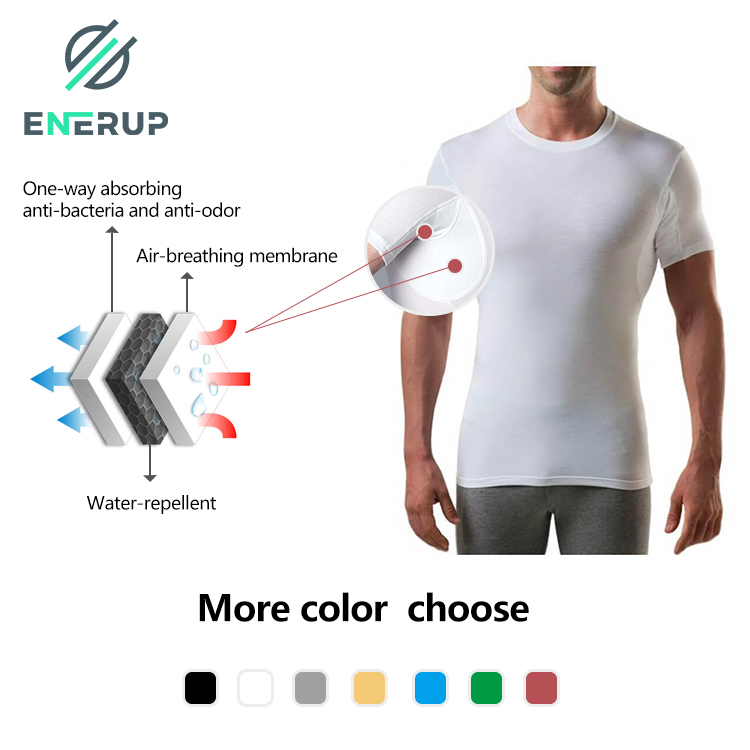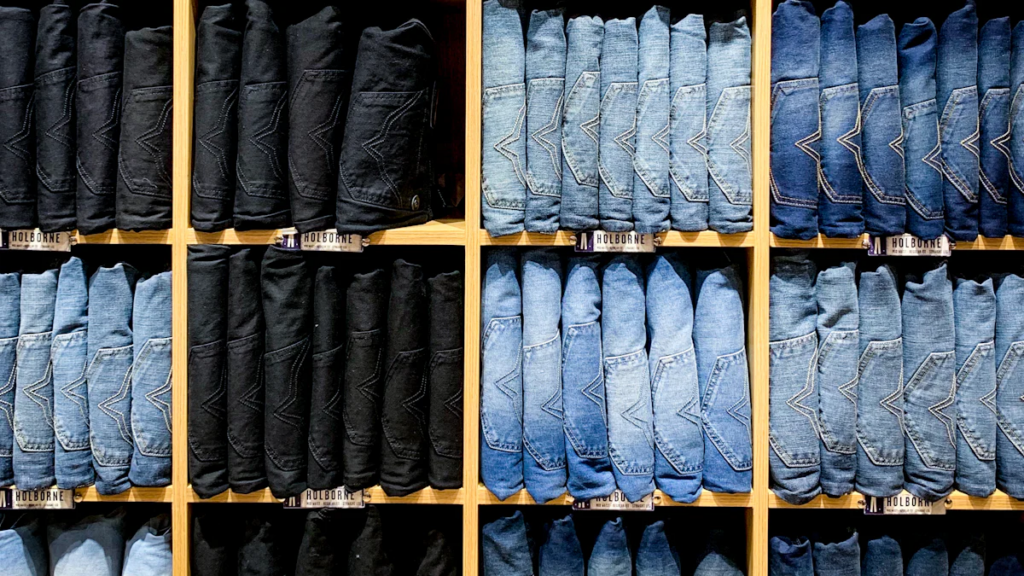Understanding Thermal Underwear
Thermal underwear, alternatively referred to as thermal innerwear or undergarments, is essential for maintaining warmth in cold weather conditions. This type of clothing is engineered to conserve body heat near the skin and is generally worn as a foundational layer beneath outer garments. It is imperative to emphasize the significance of maintaining the cleanliness of thermal underwear, as it directly influences both the hygiene and durability of these pieces.
The Importance of Keeping Thermal Underwear Clean
Maintaining cleanliness in thermal under clothes is essential for overall hygiene. Regular wear can lead to the accumulation of sweat, dirt, and bacteria, which can cause unpleasant odors and skin irritation. By washing thermal underwear regularly, these issues can be mitigated, ensuring that the garments remain fresh and comfortable to wear.
Different Types of Thermal Underwear
Thermal undergarments come in various materials, each with its own characteristics that cater to different needs and preferences. Common materials include cotton, polyester blends, and wool. Wool, especially merino wool, is highly regarded for its moisture-wicking properties and ability to retain warmth even when wet. On the other hand, synthetic materials are known for their durability and quick-drying capabilities.
Materials and Their Characteristics
- Cotton: Known for its softness and breathability but may not provide adequate insulation when wet.
- Polyester Blends: Offers durability and moisture-wicking properties, making it suitable for active individuals.
- Wool: Renowned for its exceptional warmth retention and natural odor resistance.
Thermal Underwear vs. Regular Underwear
It’s important to distinguish thermal underwear from regular underwear. While regular underwear focuses on comfort and support, thermal underwear prioritizes heat retention and moisture management. This distinction ensures that individuals are well-prepared to face cold weather conditions while maintaining optimal comfort.
The science behind thermal underwear reveals how technology has been harnessed to create effective base layers that regulate body temperature while providing comfort during outdoor activities.
Best Practices for Washing Thermal Underwear
When to Wash Your Thermal Underwear
Knowing when to wash thermal underwear is essential for maintaining hygiene and ensuring the longevity of these thermal undergarments. The frequency of washing should be based on usage and the appearance of specific signs indicating that it’s time for a wash.
Based on Usage
For regular wear, it is recommended to wash thermal underwear every three or more days to prevent odors and maintain hygiene. However, if there are multiple pairs of thermal underwear in rotation, they can be worn for up to a week or longer before washing, depending on personal preference and activity levels.
Signs It’s Time for a Wash
Certain indicators signal that it’s time to launder thermal undergarments. These signs include noticeable sweat or body odor, visible stains, or a general sense of uncleanliness. Additionally, if the garments feel damp or lose their ability to retain warmth effectively, it’s a clear indication that they require washing.
Step-by-Step Guide to Washing Thermal Underwear
Ensuring proper care during the washing process is crucial for maintaining the quality and functionality of thermal innerwear. Here is a step-by-step guide outlining best practices for washing thermal underwear:
Preparing Your Thermal Underwear for Washing
- Turn Inside Out: Before washing, turn the thermal undergarments inside out. This helps protect the outer surface from potential damage during the washing process.
- Check for Stains: Inspect the garments for any visible stains and pre-treat them using a gentle stain remover if necessary.
- Separate Colors: If you have thermal undergarments in different colors, separate them before washing to prevent color bleeding.
Hand Washing vs. Machine Washing
Hand washing with mild detergent is recommended as it provides gentle yet thorough cleaning while minimizing wear and tear on the fabric. Line drying is also advisable as it prevents shrinkage and maintains the shape of the garments.
On the other hand, machine washing can be done with care using cold water and a delicate cycle. However, it’s important to avoid using the dryer as high heat can compromise the elasticity and overall integrity of thermal undergarments.
Special Care for Different Types of Thermal Underwear
When it comes to caring for thermal underwear, the type of material significantly influences the washing and maintenance process. Wool and synthetic thermal undergarments require specific attention to ensure their longevity and performance.
Caring for Wool and Merino Wool Thermal Underwear
Wool, especially merino wool, is renowned for its exceptional warmth retention and natural odor resistance. It is considered the warmest base layer material and one of the best fabrics for wicking moisture. Fine wools are generally less itchy and make better options for thermal underwear.
Washing Tips
For wool thermal undergarments, it’s crucial to prioritize gentle care during the washing process. Here are some essential washing tips:
- Use Cold Water: When washing wool or merino wool thermal undergarments, opt for cold water to prevent shrinkage and maintain the fabric’s integrity.
- Mild Detergent: Select a mild detergent specifically formulated for delicate fabrics to avoid damaging the natural fibers of wool.
- Hand Wash Preferred: Hand washing is highly recommended to ensure a gentle yet thorough cleaning process that minimizes wear and tear on the garments.
Drying and Storage
Proper drying and storage methods are vital for maintaining the quality of wool thermal innerwear:
- Air Dry: After hand washing, gently squeeze out excess water from the garments without wringing them. Then, lay them flat on a clean towel to air dry away from direct heat or sunlight.
- Fold Carefully: When storing wool thermal undergarments, fold them neatly to prevent stretching or misshaping. Avoid hanging them as this can cause distortion over time.
Maintaining Synthetic Thermal Undergarments
Synthetic thermal undergarments, including polyester blends, require effective cleaning methods to preserve their durability and moisture-wicking properties.
Effective Cleaning Methods
Cleaning synthetic thermal undergarments involves specific techniques tailored to their material composition:
- Machine Wash with Cold Water: Utilize a delicate cycle with cold water when machine washing synthetic thermal innerwear. This helps maintain the fabric’s integrity while effectively removing dirt and sweat.
- Avoid Fabric Softeners: Refrain from using fabric softeners as they can diminish the moisture-wicking capabilities of synthetic materials.
Avoiding Common Mistakes
To prolong the lifespan of synthetic thermal undergarments, it’s important to steer clear of common mistakes:
- Skip Bleach: Avoid using bleach as it can degrade the fibers of synthetic materials over time.
- Gentle Drying: Opt for air drying or using low heat when machine drying synthetic thermal undergarments to prevent damage from high temperatures.
By following these specialized care guidelines based on material type, individuals can ensure that their thermal underwear remains in optimal condition for extended periods.
Extending the Life of Your Thermal Underwear
Proper care and maintenance are essential for thermal underwear to ensure longevity and optimal performance. By following a few simple do’s and don’ts of thermal underwear care, individuals can extend the lifespan of their garments while preserving their functionality.
Do’s and Don’ts of Thermal Underwear Care
When it comes to caring for thermal innerwear, there are several key practices to keep in mind:
Do:
- Follow Manufacturer’s Instructions: Always adhere to the specific care instructions provided by the manufacturer. This includes recommended washing techniques, drying methods, and any additional precautions tailored to the material composition of the thermal undergarments.
- Inspect Regularly: Routinely inspect your thermal underwear for signs of wear, tear, or damage. Identifying issues early on allows for timely repairs or replacements, preventing further deterioration.
- Air Dry Whenever Possible: Opt for air drying as the primary method after washing thermal undergarments. Line drying or flat drying helps maintain the fabric’s integrity and prevents potential damage from high heat exposure.
Don’t:
- Over-Wash: Avoid excessive washing as it can lead to premature wear and tear. Over-washing may compromise the exclusive properties of certain materials, such as merino wool, impacting their warmth retention and moisture-wicking capabilities.
- Expose to Direct Sunlight: Refrain from exposing thermal undergarments directly to sunlight for prolonged periods. UV rays can cause fading and degradation of fabric fibers over time, reducing the overall lifespan of the garments.
- Neglect Seasonal Maintenance: Don’t overlook seasonal maintenance routines. Proper storage during off-seasons is crucial for preserving thermal underwear when not in use.
Storing Your Thermal Innerwear Properly
Effective storage practices play a significant role in prolonging the life of thermal innerwear. Whether preparing them for warmer seasons or ensuring they remain in top condition during colder months, proper storage is key.
Seasonal Storage Tips
During warmer seasons when thermal undergarments are not frequently used, consider these tips for seasonal storage:
- Clean Before Storage: Ensure that all thermal underwear is thoroughly cleaned before storing them away. Lingering dirt or sweat can attract pests and lead to fabric deterioration over time.
- Use Airtight Containers: Store clean and dry thermal undergarments in airtight containers or vacuum-sealed bags to prevent exposure to moisture, dust, or pests during extended periods of non-use.
- Avoid Compression: Refrain from compressing thermal undergarments excessively when storing them. Maintaining their natural shape helps prevent stretching or misshaping over time.
Preventing Damage During Storage
To safeguard your thermal innerwear from potential damage while in storage:
- Control Humidity Levels: Store your garments in a cool, dry environment with controlled humidity levels to prevent mold growth or moisture-related damage.
- Rotate Stored Items: Periodically rotate stored items within containers to minimize prolonged pressure on specific areas of the fabric, promoting even preservation throughout each garment.
By implementing these do’s and don’ts of care along with proper storage techniques, individuals can significantly enhance the longevity and functionality of their cherished thermal innerwear.
Harvest SPF Textile Co, Ltd, established in 1993, is a company that specializes in the research, development, and international trading of healthy and functional textiles. One of their key product categories is thermal underwear.
The company started to expand its global business by making thermal underwear. They have a particular fondness for Merino Wool and have developed a variety of merino wool compositions in layers to meet the needs of different seasons. This innovation has led to great market success. They are particularly adept at combining Merino Wool with sustainable materials, or adding prints to enhance product line diversity.
Harvest’s thermal underwear is designed with the concept of “Dress for Health, Dress for Energy“. The company has more than 30 patents, demonstrating its commitment to innovation in the textile industry. Over the past 20 years, Harvest’s customers have spread across 60 countries in North America, South America, Europe, and Australia. Their main customers include scaled retailers, Amazon sellers, and D2C brands that focus on bringing cutting-edge functional clothing products as well as sustainable solutions to the market.
Conclusion
Recap of Key Points
In summary, understanding the significance of maintaining clean thermal underwear is crucial for overall hygiene and the longevity of these essential garments. Different types of thermal undergarments, including cotton, polyester blends, and wool, offer distinct characteristics tailored to various needs and preferences. It’s important to recognize the specific care requirements for each material type to ensure proper maintenance.
Best practices for washing thermal underwear involve identifying the appropriate timing for laundering based on usage and recognizing signs that indicate when a wash is necessary. Additionally, following a step-by-step guide for washing thermal innerwear can help preserve their quality and functionality over time.
Special care considerations for wool and synthetic thermal undergarments emphasize the importance of utilizing suitable cleaning methods and avoiding common mistakes that could compromise their performance.
Extending the life of thermal underwear involves adhering to essential do’s and don’ts of care, as well as implementing effective storage practices during off-seasons to maintain their condition.
Encouragement to Practice Proper Care
Individuals are advised to adopt meticulous care practices for their thermal innerwear to preserve hygiene and extend its durability. It is crucial to conduct regular inspections, employ gentle washing methods, and adhere to appropriate storage techniques. Adhering strictly to these recommended practices will ensure that the thermal underwear remains in excellent condition, consistently offering dependable warmth and comfort in cold weather scenarios.
Remember that proper care not only enhances the lifespan of thermal undergarments but also contributes to personal comfort and well-being. With a commitment to practicing proper care routines, individuals can continue to enjoy the benefits of high-quality thermal innerwear season after season.














